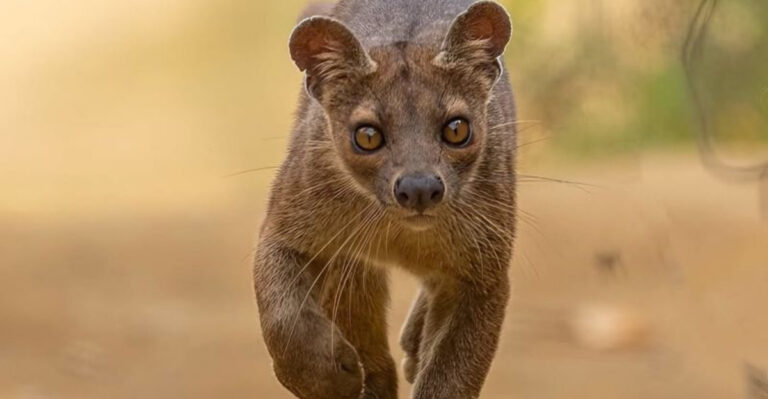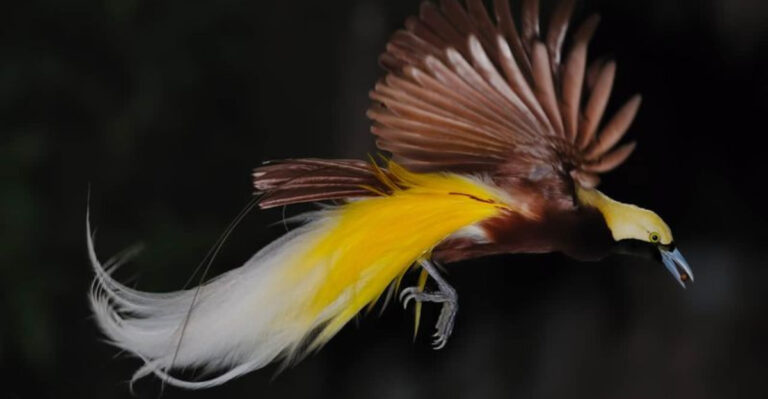10 Fun Facts About The Harpy Eagle
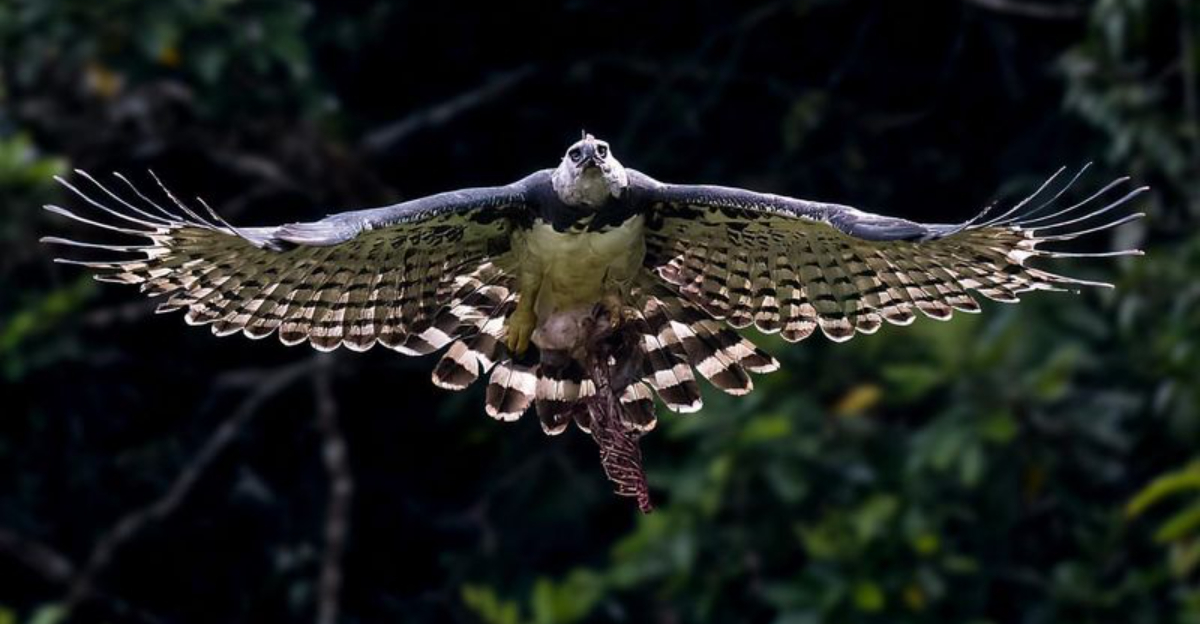
Welcome to the wild and whimsical world of the Harpy Eagle, a majestic avian predator that soars through the rainforests of Central and South America. Known for their striking appearance and formidable hunting prowess, these eagles are as fascinating as they are fearsome.
Join us on an engaging journey to discover ten captivating facts about the Harpy Eagle that will not only intrigue your mind but also tickle your funny bone.
1. Majestic Appearance
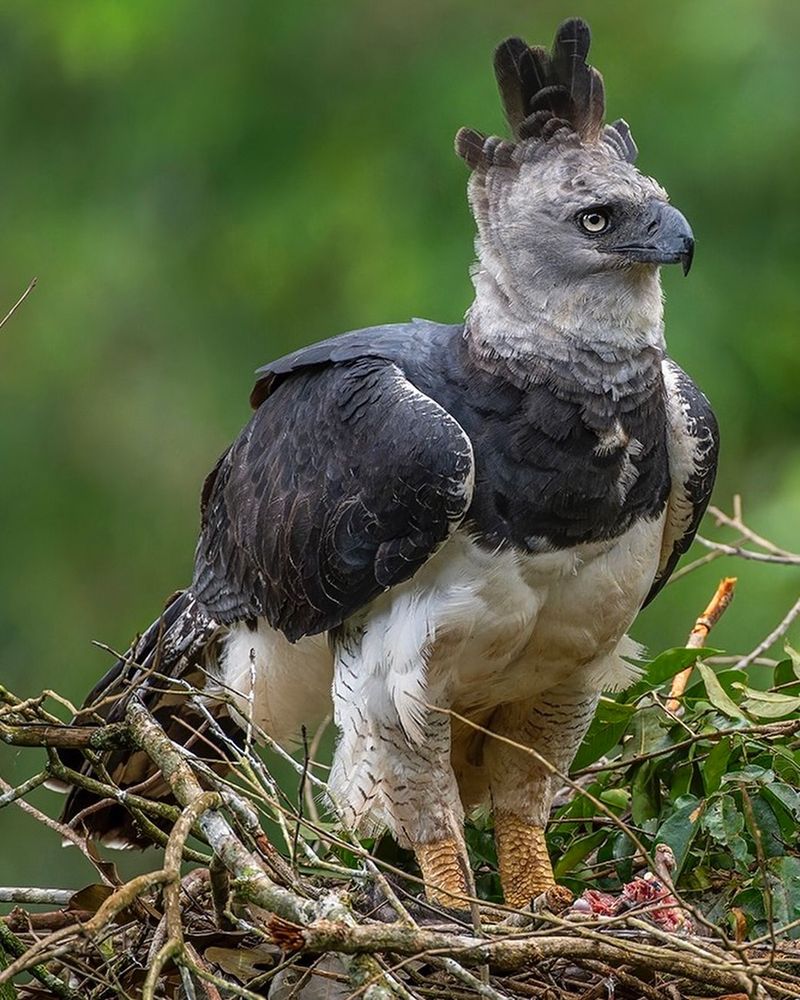
The Harpy Eagle is a true spectacle of nature, boasting a crown of feathers that would make any royal envious. These feathered crowns not only add to their majestic appearance but also aid in their hunting by directing sound to their ears.
With talons larger than a grizzly bear’s claws, they are the kings and queens of the canopy. The Harpy’s captivating eyes can spot prey from a kilometer away, making them the ultimate aerial predators. Their imposing size and distinctive look often make them the stars of their forest domain.
Standing at over three feet tall, these eagles command respect and fear alike. Imagine having a wingspan wider than your couch – that’s the Harpy Eagle for you! Catching a glimpse of a Harpy Eagle is like witnessing a myth come to life.
Their regal demeanor and impressive stature make them a favorite subject for photographers and bird enthusiasts alike.
2. Powerful Predators
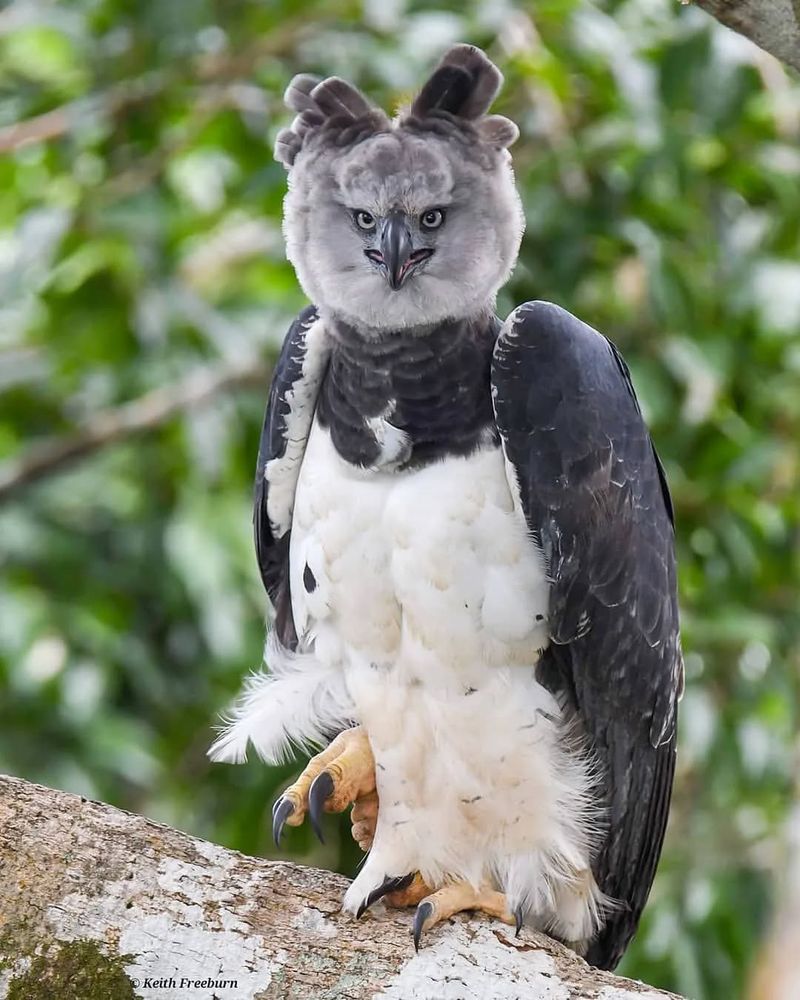
When it comes to hunting, the Harpy Eagle doesn’t mess around. Known as the apex predator of the treetops, this bird preys on monkeys, sloths, and even iguanas. With a grip strength of over 500 psi, it can snatch a monkey off a branch as if it were picking an apple.
The Harpy Eagle’s hunting technique is as impressive as it is efficient. These eagles glide silently through the forest, using the element of surprise to their advantage. Their powerful legs and razor-sharp talons make quick work of their prey, ensuring a swift and successful hunt.
In a world where the early bird catches the worm, the Harpy Eagle takes it up a notch by catching monkeys for breakfast. Their role as top predators helps maintain the balance of their ecosystem, proving that with great power comes great responsibility.
3. Impressive Wingspan
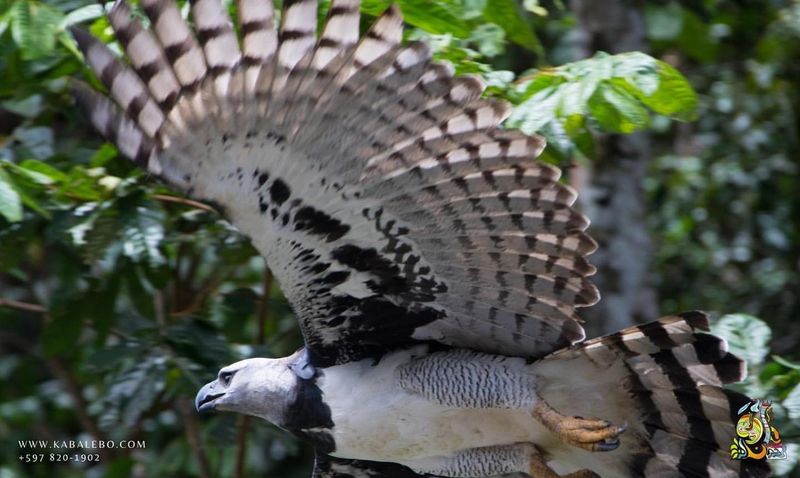
The Harpy Eagle’s wingspan is nothing short of extraordinary, stretching up to seven feet. This impressive wingspan allows them to soar above the rainforest canopy with grace and precision. It’s no wonder they’re often compared to flying giants.
Despite their large wings, Harpy Eagles are masters of maneuverability. They can navigate through dense forests with expert ease, showcasing their agility and control. Watching a Harpy Eagle in flight is like witnessing an aerial ballet, where every movement is deliberate and purposeful.
Their wings are not just for show – they are essential tools for their survival. The ability to glide silently and swiftly is key to their hunting success. With such awe-inspiring wings, the Harpy Eagle truly embodies the spirit of freedom and adventure.
4. Habitat And Range
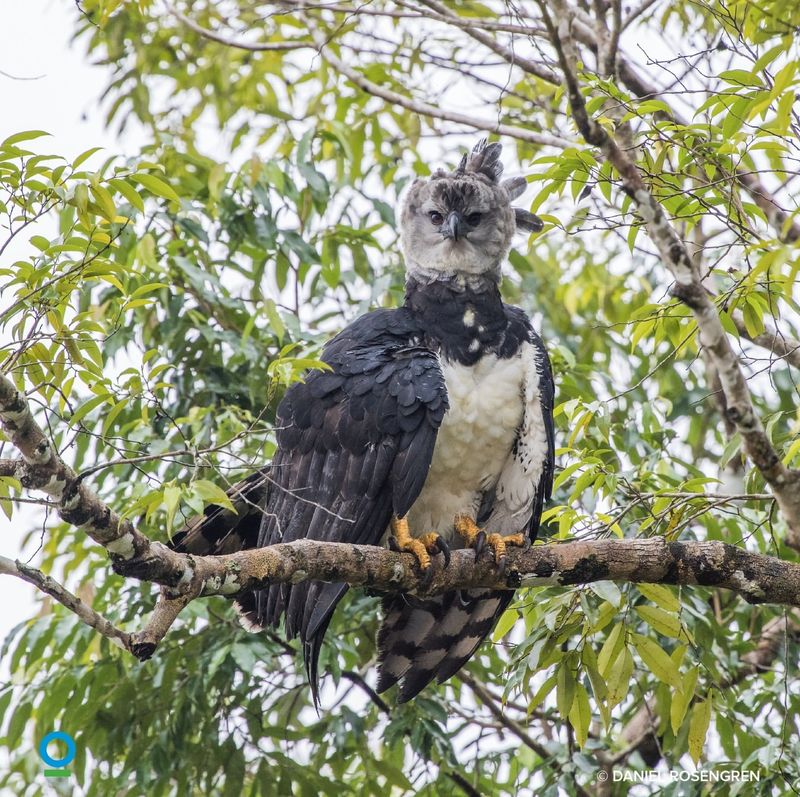
Harpy Eagles call the lush rainforests of Central and South America their home. These majestic creatures can be found from southern Mexico all the way to northern Argentina. The dense canopy and abundant wildlife make these forests the perfect habitat for such powerful predators.
These eagles prefer undisturbed forests where they can hunt and nest without interference. Unfortunately, habitat loss due to deforestation poses a significant threat to their survival. Conservation efforts are crucial to ensure these magnificent birds continue to thrive in their natural habitats.
For those lucky enough to spot a Harpy Eagle in the wild, it’s a magical experience that leaves a lasting impression. Their presence in the rainforest is a testament to the rich biodiversity of these regions and the importance of preserving such ecosystems.
5. Family Life
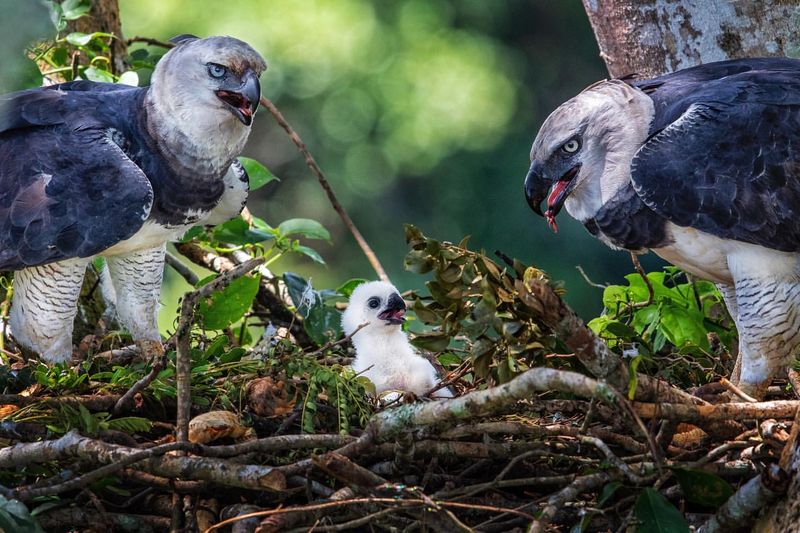
The family dynamics of Harpy Eagles are as fascinating as their hunting prowess. These birds are monogamous, often forming lifelong partnerships with their mates. Together, they build massive nests high up in the trees, creating a safe haven for their offspring.
Raising a chick is no small feat for Harpy Eagle parents. Both mom and dad take turns hunting and guarding the nest, ensuring the chick is well-fed and protected. The chicks stay in the nest for about a year, learning the skills they need to become successful hunters themselves.
Harpy Eagles are known for their strong family bonds, and their dedication to raising the next generation is truly commendable. Watching a family of Harpy Eagles is like observing a well-rehearsed play, where each member knows their role to perfection.
6. Conservation Status
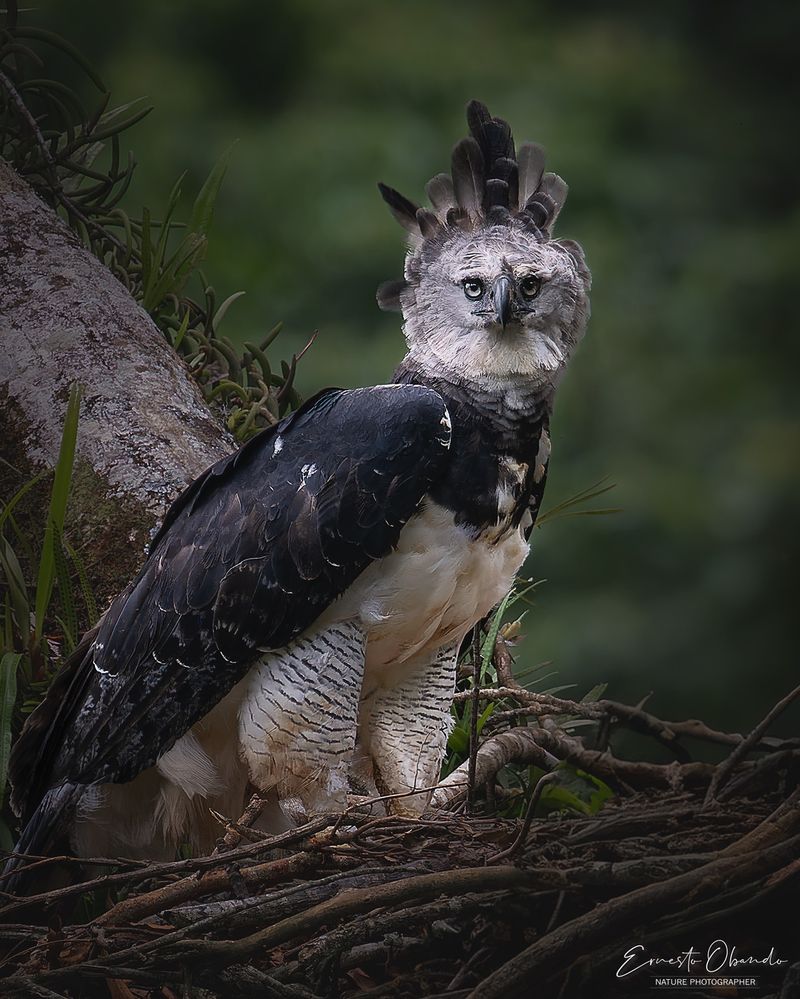
Sadly, the Harpy Eagle faces numerous threats in the wild. Deforestation and habitat destruction are the primary challenges these birds encounter. Despite their status as top predators, they are not immune to the impacts of human activity.
Conservationists are working tirelessly to protect these magnificent creatures. Various programs aim to preserve their habitats and educate local communities about the importance of these birds. Captive breeding efforts also play a crucial role in ensuring the survival of the species.
With their striking appearance and important ecological role, Harpy Eagles are ambassadors for rainforest conservation. Protecting these birds means safeguarding the future of their entire ecosystem, highlighting the interconnectedness of nature.
7. Unique Vocalizations
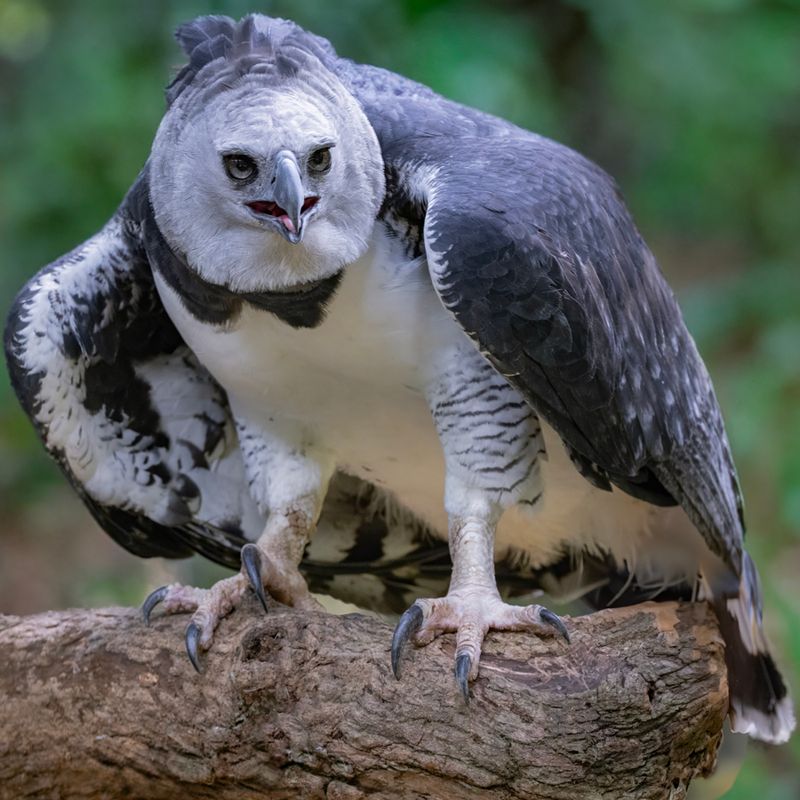
Harpy Eagles may not be chatty, but they have a distinctive set of vocalizations. Their calls are often described as eerie, echoing through the forest like a haunting symphony. These vocalizations play a crucial role in communication, especially between mates and family members.
Their eerie calls can often be heard during the early morning or late afternoon, adding an element of mystery to the dense forests they inhabit. For those who have heard a Harpy Eagle call in the wild, it’s an experience that sends shivers down the spine.
Despite their intimidating appearance, the gentle calls of the Harpy Eagle reveal a softer side. These vocalizations are a reminder that even the fiercest predators have a tender, communicative aspect.
8. Cultural Significance
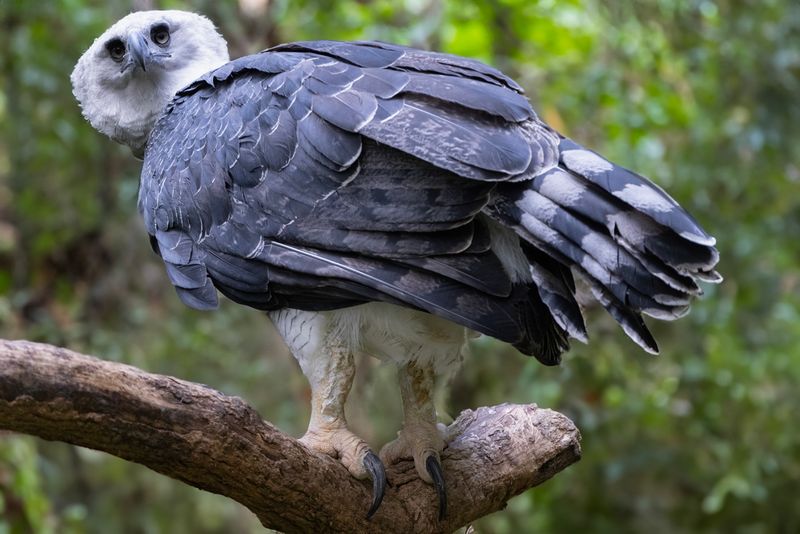
The Harpy Eagle has held a place of cultural significance for many indigenous communities throughout history. Often revered as a symbol of strength and courage, these birds feature prominently in myths and legends across Latin America.
In some cultures, the Harpy Eagle is considered a guardian spirit, believed to protect the forest and its inhabitants. Their feathers are prized for ceremonial headdresses, symbolizing power and majesty. The eagle’s presence in folklore is a testament to its enduring legacy among the people who share its habitat.
Beyond myths and legends, the Harpy Eagle serves as a powerful reminder of the interconnectedness of nature and culture. Preserving these birds is not just about conservation but also about maintaining the cultural heritage of the communities that revere them.
9. Dietary Habits

The Harpy Eagle’s diet is as diverse as the rainforest itself. These apex predators primarily feast on medium-sized mammals like monkeys and sloths, but they aren’t picky eaters. Reptiles and birds round out their menu, showcasing their adaptability as hunters.
Their hunting strategy is a combination of patience and precision. Harpy Eagles often perch silently, waiting for the perfect moment to strike. With their powerful talons and keen eyesight, they ensure every meal is hard-earned and satisfying.
The Harpy Eagle’s dietary habits highlight their role as vital components of the ecosystem. By keeping prey populations in check, they help maintain the natural balance, demonstrating that every meal has a greater purpose in the circle of life.
10. Longevity And Lifespan
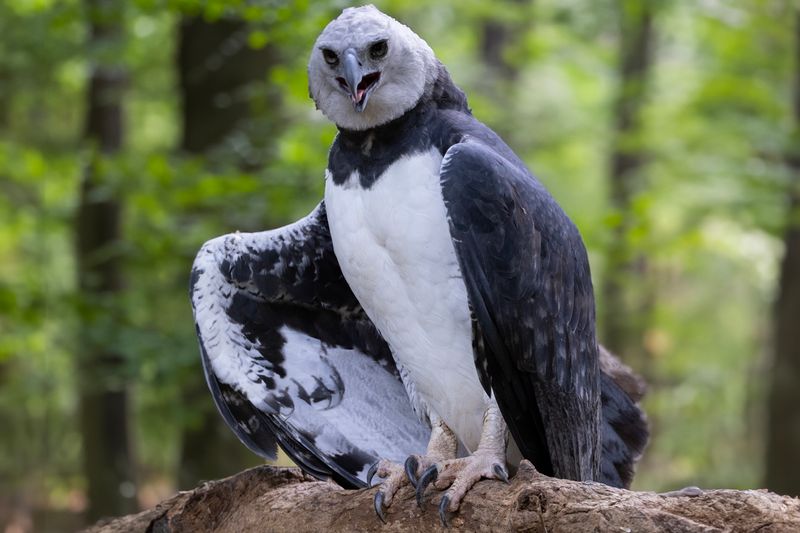
In the avian kingdom, the Harpy Eagle is considered a senior citizen. These magnificent birds can live up to 40 years in the wild, a testament to their resilience and adaptability. Their long lifespan allows them to form lasting bonds and raise multiple generations.
Harpy Eagles mature slowly, reaching adulthood at around five years old. This extended development period ensures they are well-prepared for the challenges of life in the rainforest. Their longevity is a reflection of their status as top predators, with few natural threats to their existence.
For bird enthusiasts, the sight of an elderly Harpy Eagle is akin to meeting a wise old sage. These majestic creatures embody the wisdom and strength of the rainforest, serving as a reminder of the enduring beauty and complexity of nature.


